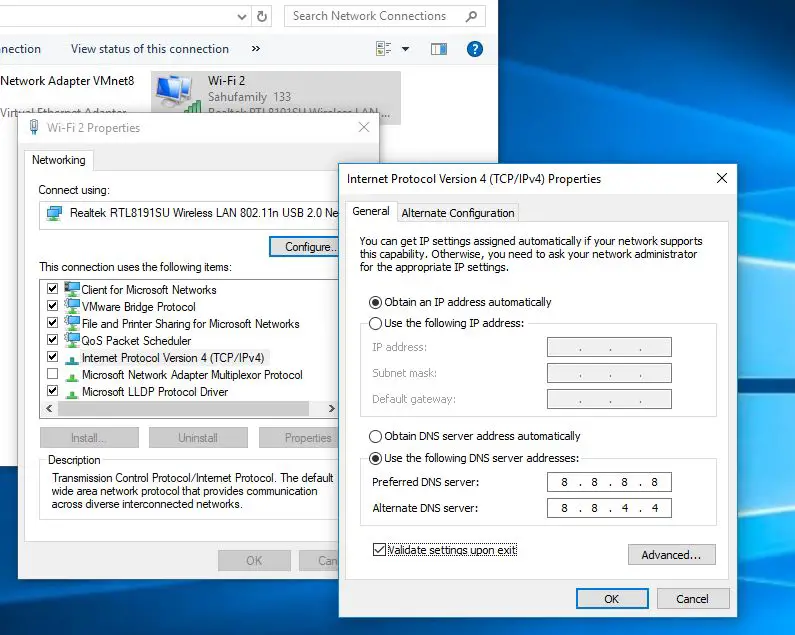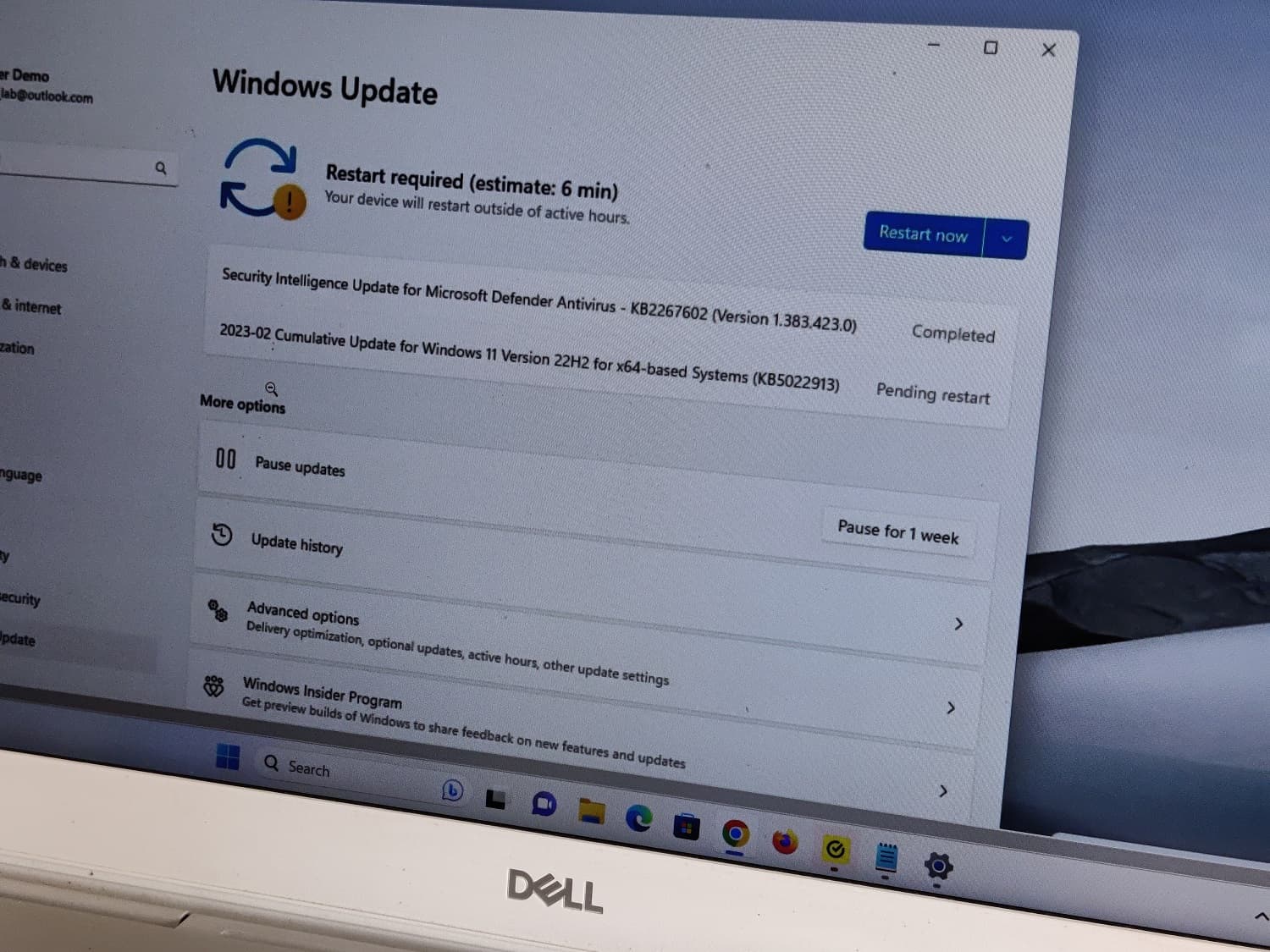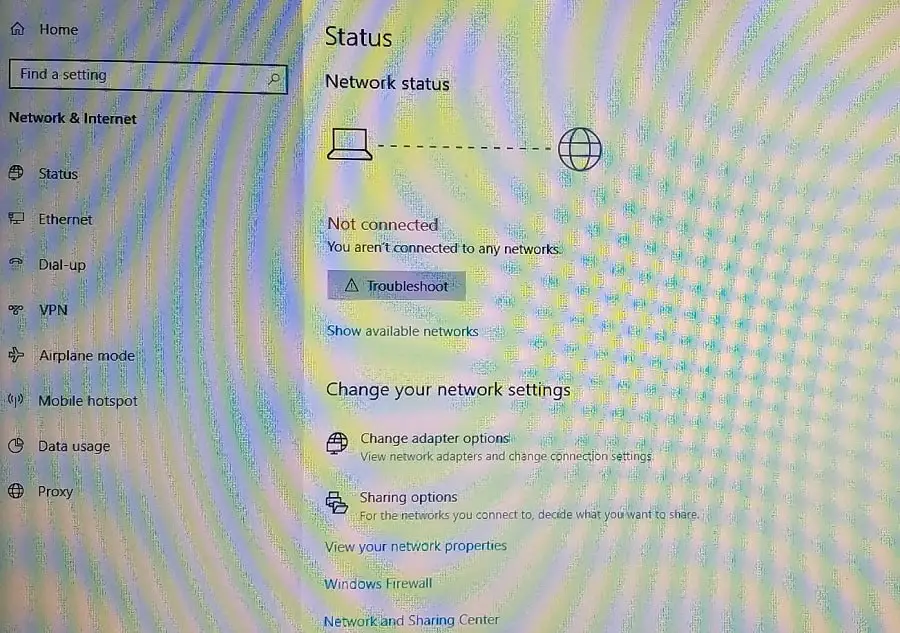Have a question in mind why do some of the Windows updates just refuse to install? When you open Windows update history, you might notice it shows that some Windows updates failed to install with different errors such as 0x800f080a or 0x800f0904. If you are experiencing a similar problem Windows Update Won’t Install Updates or Windows 10 update failed to install or stuck downloading you are right on track. In this post, we discuss some of the unique solutions you can apply to make Windows install updates again.
Contents
Windows update failed to install
Recently Microsoft has released Windows update KB5048652 for devices running the latest Windows 10 version 22H2. Installing KB5048652 bumps OS to Windows 10 Build 19045.5247 and focuses on security and non-security fixes. However several Windows users report Windows 10 update KB5048652 fails to install with different errors 0x800f0922, 0x8000ffff, and 0x800f0826.
Many users describe the problem on Microsoft’s forum
There were problems installing some updates, but we’ll try again later. If you keep seeing this and want to search the web or contact support for information, this may help:
2024-12 Cumulative Update for Windows 10 Version 22H2 for x64-based Systems (KB5048652) – Error 0x800f0831, 0x800f0900 or 0x80070005″
Why does Windows update fail to install?
Many possible things can cause Windows 10 Updates to fail over and over. A slow internet connection that may fail to download Windows updates from Microsoft server or a Computer that doesn’t have enough free drive space to complete Windows 10 updates are common. Again Corrupt update files, Due to some reason update service is not started, and third-party software or antivirus conflict also causes Windows update failed to install on your computer.
- Restart your computer and check for updates again probably help fix the problem.
- You need to free up disk space, disable security software and try to install Windows updates
- Ensure the Internet connection is stable and disconnect VPN (If configured on your computer)
- Running Windows update troubleshooter automatically diagnoses and fixes the related problem on Windows 10.
- Restart Windows update service and Clear Windows update cache help most users fix such problems.
How to fix Windows update problems?
The first thing we recommend is to reboot your PC, check for and try to install the Windows update again. When you reboot your PC, not only refreshes the operating system but also clears temporary glitches present there that prevent Windows updates download or apply.
Open the command prompt as administrator and run this command SC config trustedinstaller start=auto Now try to install the Windows update again.
Check internet connection
The next thing you need to check your internet connection. Yes, make sure you have a stable internet connection to download Windows update files from the Microsoft server.
- You can check your internet speed at fast.com or speedtest.net.
- Press Windows key + R, type ping google.com -t, and click ok to check if continuously getting ping replay from the Google server.
If ping replay breaks you need to troubleshoot the internet connection before downloading or installing Windows updates.
In addition, disconnect the VPN if configured on your device and temporarily disable security software before trying to install Windows updates.
Free up some disk space
You need to check and make sure you have enough free space on the system drive to download and apply the latest Windows updates. It’s important especially if you have SSD drive installed.
- Press the Windows key + E to open Files Explorer then click on This PC,
- Look at the system drive (usually C) minimum of 10 GB of free space there. If not you need to free up some disk space.
- To Free up disk space on your system drive, you can move some download files to an external drive.
- You can also reclaim a lot of storage by uninstalling apps and Games you rarely use.
- In addition, run Disk Clean up or read how to delete temporary files automatically on Windows 10.
Pro tip – Disconnect nonessential devices such as USB flash drives or external HDDs, headphones or printers before checking for Windows updates.
Try to install the Windows update again
As per Microsoft experts, the most common cause of Windows Update failed messages is that there are two updates waiting. If one is a servicing stack update, it has to install first, and the machine has to restart before it can install the next update. Restart Windows and try running Windows Update again, yes this is very effective for most users.
- Press the Windows key + X and select settings,
- Click on Update & Security the hit check for updates button,
- Also, make sure to click on the download and install link under optional updates (If available)
- This will start the download and install Windows updates from the Microsoft server,
- You only need to restart your PC to apply Windows updates.
Start windows clean boot State
Clean booting your computer may also help. If any third-party software causes conflict to download & install Windows updates.
Here’s how to do this:
- Go to the search box > type msconfig
- Select System Configuration > Go to the Services tab
- Select Hide all Microsoft services > Disable all
- Go to the Startup tab and click on Open Task Manager
- Disable all the unnecessary services running there.
- Restart your computer and check for updates.
Now open Windows update settings and hit the check for updates button.
Try Windows Update Troubleshooter
Run the built-in Windows Update Troubleshooter that attempts to identify and fix any problems that exist that might prevent Windows 10 from downloading and installing the latest Windows Updates.
The process will automatically scan for and detect problems within your system, which can take a few minutes to complete.
To run the update troubleshooter
- Press Windows key + x and select settings,
- Go to Update & Security then Troubleshoot, Click on the additional troubleshooter link.
- Locate Windows Update select it and then click on Run the troubleshooter.
- The diagnosis process checks the status of Windows Update and its related Services, repairs, and resets Windows Update components.
- In Addition, the troubleshooter clears the Windows Update cache, related temporary files, checks for pending updates, and more.
- Once the troubleshooting is complete restart your computer and check for Windows updates again.
Reset Windows Update cache
If the problem continues after running the troubleshooter, the Windows update stuck download 100 or fails to install then reset Windows update components following the steps below.
Open Command Prompt as administrator, enter the following commands and hit Enter after each one:
- net stop wuauserv
- net stop cryptSvc
- net stop bits
- net stop msiserver
- Ren C:\WindowsSoftwareDistribution SoftwareDistribution.old
- net start wuauserv
- net start cryptSvc
- net start bits
- net start msiserver
These commands will first Stop the Windows update service and its related services. Then rename the SoftwareDistribution folder to SoftwareDistribution.old (Where Windows stores update files, if any files in this folder get corrupted this may cause Windows updates fail to install. ) After that restart the Windows update and its related services.
If you are not comfortable with a command prompt then
- Open the Windows services console using services.msc
- Stop Windows Update service and its related services (BITS)
- Now open File Explorer using Windows key + E and Go to the following location. C:\Windows\SoftwareDistribution\Download
- Delete everything in the folder, but do not delete the folder itself.
- To do so, press CTRL + A to select everything and then press Delete to remove the files.
Or rename the Software Distribution folder (C:\Windows\) After that restart the services you previously stopped. and check for Windows updates again.
Switch Google DNS
If you notice Windows updates won’t download or are stuck downloading updates then change your DNS address following the steps below. Several users recommended this as a working solution when Windows updates are stuck downloading.
- Press Windows key + R, type ncpa.cpl and click ok,
- This will open the network connections window,
- Locate your active network adapter, right-click and select properties,
- Double-click on Internet protocol version 4 (TCP/IPv4) to open its properties,
- Select the radio button, use the following DNS server address then set preferred DNS server 8.8.8.8 and Alternate DNS server 8.8.4.4.
- Checkmark on validate settings upon exit, click ok, apply and ok
Now try to install Windows updates again and check its status.
Repair Corrupted Windows System Files
Corrupted system files might prevent new Windows updates to apply and result Windows 10 update fails to install or is stuck downloading. Run DISM (Deployment Image Servicing and Management) and sfc (System file checker) utility help detect and repair missing system files automatically.
- Open the command prompt as administrator,
- First, run the DISM command DISM.exe /Online /Cleanup-image /Restorehealth
- Once the command is executed run sfc /scannow command
- Both commands check system image health and check for corruption in system files if found it will restore them with the correct one.
- Let the scanning process complete 100%, Once done restart your PC and try to install the Windows update again.
Update Windows 10 Offline
Also, you can resolve Windows update installation problems by manually installing the latest Windows 10 updates.
- Visit the Windows 10 update history webpage where you can notice the logs of all the previous Windows updates that have been released.
- For the most recently released update, note down the KB number.
- Now use the Windows Update Catalog Website to search for the update specified by the KB number you noted down. (for example KB5048652) Download the update depending on if your machine is 32-bit = x86 or 64-bit = x64.
- Open the downloaded file to install the update.
That’s all after installing the updates simply restart the computer to apply the changes. Also, If you are getting Windows Update stuck while upgrading the process simply use the official media creation tool to upgrade to Windows 10 version 22H2 without any error or problem.
Did these solutions help to fix “Windows 10 update error 0x800f0900“? Let us know in the comments below.
Also, read
- Windows 11 upgrade or installation failed? 9 Things to Try
- Solved: Windows 10 black screen with cursor after sleep
- Solved: An operating system wasn’t found on Windows 10
- Solved: Windows 10 start menu search not working after update
- Windows 11 Photos App not opening or Not working? Try these solutions






















I can’t get my computer to install and continue to have the error described in your blog. See https://answers.microsoft.com/en-us/windows/forum/windows_10-update/windows-update-failure-0x800f0922-and-stuck-at/40038f3a-599b-4083-ac72-24d0fb7a5a8b?tm=1534876300283&lc=1033
Windows 10 (Hewlett Packard laptop) computer is at the 1803 build and will not install KB4343909 and keeps giving error 0x800f0922. Then backs out the update. Then retries the update. Then fails. Then backs out. Then repeats every day… Every install/backout cycle takes over an hour! This is totally ridiculous. I used the Troubleshooting wizard/app for Windows Updates. It indicated it found problems and fixed the problems. However this is not true. The 0x800f0922 problem persists. Furthermore, in the 1709 build there was a “Pause Updates” button to allow me to suspend this ridiculous behavior. But in the 1803 build the pause option is gone. So not only has Microsoft broken my computer, Microsoft has removed the only means for me to control the failure behavior and be productive!
Three questions:
How do I fix the 0x800f0922 failure?
How do I pause or suspend installation of KB4343909?
Microsoft: what is wrong with your quality testing?
Thank you
Same problem. I also installed a clean windows 10 version, but with no results.
“2018-09 Cumulative Update for Windows 10 Version 1803 for x64-based Systems (KB4457128) – Error 0x80070002”
The Win10 update process is clearly junk. “2019-02 Cumulative Update for Windows 10 Version 1803 for x64-based Systems (KB4487017) – Error 0x800706ba” – I haven’t been able to automatically install any updates since the Fall Creators version. I’m thinking about going to a MAC to be honest – Microsoft has failed us.
I’m getting a different error – 0x800f0922
Leading to three re-starts the first time it failed (one to install and two to automatically remove what it had changed) but only two re-starts the second time it failed.
I have been running EdgeBlock to prevent Edge from running. This might be the problem, so next time I will re-enable Edge and see what happens…
It’s quite annoying that the Update Troubleshooter at first simply suggests re-applying the failed update and when I skipped that it said that it had fixed two issues, without giving enough detail.
Running the troubleshooter a second time later it came up with the same named issues, leaving me not very confident that Microsoft know what they’re doing…
Thank you.
Just re-installed my pc. Got the update fail and disableing all the unnecessary services fixed the problem.
It refused to install on Windows 10 Home 64 1909 … Tried with the AV on and off, same thing.
Tried it with the standalone installer, it failed. Let windows update try it 2 times and it failed.
So obviously, Microsoft needs to check this update and release it under a newer number after
it is really fixed. And I am not the only person who has had issues installing KB4577671
All useless fix 2009 same problems, Windows brakes and nothing can do, only clean install, Some Update brake Windows or someone mess , attack your system. Try uninstall lasts updates.
If you have uninstalled Edge Browser thew update can fail as its looking to update the edge browser.
No idea what “threw update” means.
Tried all of the above, after reboot, the installation gets to 97% and then rolls back, reboots, then continues the roll back, reboots back into windows and displayed a error message in the Updates area:
There were some problems installing updates, but we’ll try again later. If you keep seeing this and want to search the web or contact support for information, this may help: (0x800f0922)
Windows10.0-kb5003637-x64_fd175a387e2f07586d85899a75d0bf10120a3c2c
I tried all sort of solutions, including all the ones in the article.
I was getting to 98% then rollback…wait…fail…rollback…wait…forced repeat…wait…fail…rollback…and so on.
I’m using a laptop that I use for clients so I couldn’t reinstall Windows or recover.
But I fixed the problem…
here’s how…
I reinstalled MS Edge and made it my default browser. Then I ran the MS Update manually and now my laptop is up to date.
can’t install ms edge no matter what. It just disappeared one day and fails to install even using powershell. Tried like 10 solutions, but it fails to open
Struggled with this for months, go here – https://www.microsoft.com/en-ca/software-download/windows10 – and select “Update Now” . Problems solved.
Thanks dude.
None of the solutions worked, and my usb devices stopped working.
This worked for me 🙂